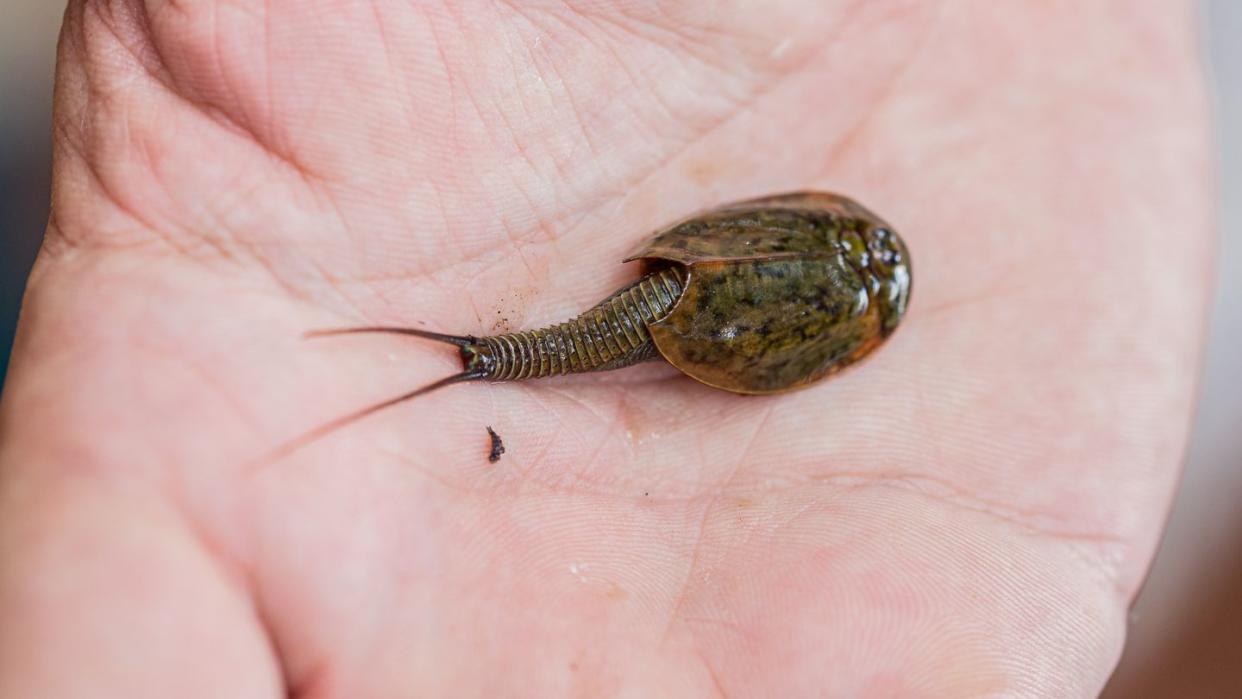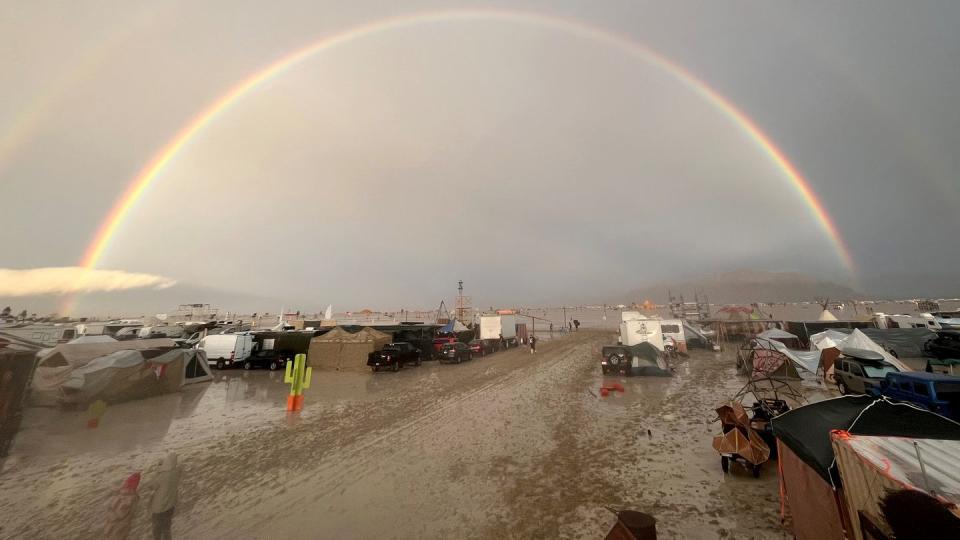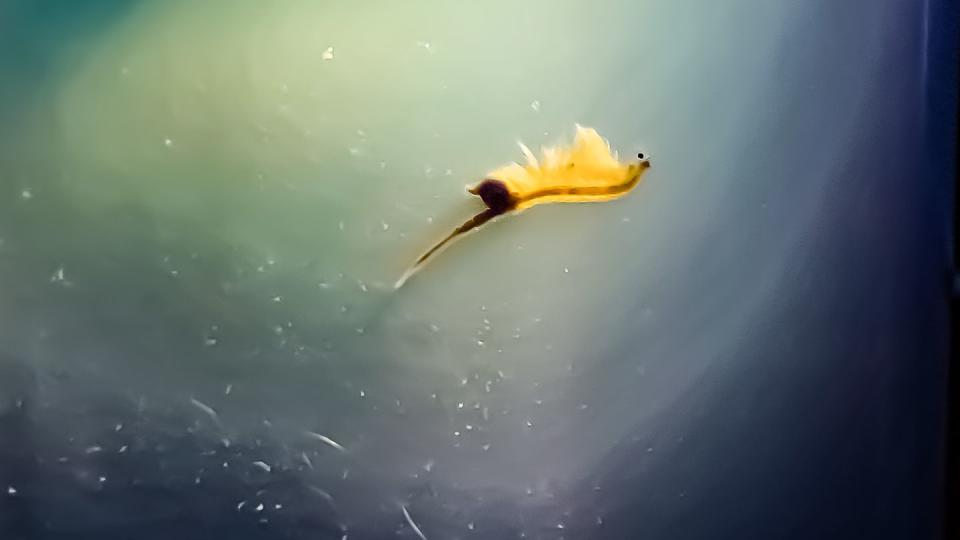This Year’s Burning Man Turned Into a Giant Revival for Prehistoric Dinosaur Shrimp

"Hearst Magazines and Yahoo may earn commission or revenue on some items through these links."
This year’s surprisingly wet Burning Man festival in Nevada trapped thousands of festival-goers after a flood made the area impassible. In this wet, “diet Woodstock” nightmare, the exceptionally heavy rains have also reactivated some local fauna, so-called “dinosaur shrimp” and “fairy shrimp.” To understand dinosaur shrimp and fairy shrimp, we need a little lesson in extremophile organisms and drought tolerance.
Burning Man is held in the remote Black Rock City, which isn’t really a city at all; it’s the term for the temporary settlement built each year for Burning Man, which lasts a week when attendees are not trapped by a flood. The site is in the Black Rock Desert, hundreds of miles from Reno and gated by the tiny, nearby towns of Empire and Gerlach and the ghost town of Sulphur. The region was known for natural resources, but the remaining gypsum mine in Empire closed several years ago.
Fun fact: One of the only cities in this portion of the state, Winnemucca, is famous for its appearance in “I’ve Been Everywhere” by Johnny Cash.
More than 80 percent of the land area of Nevada is under protection by the federal government, the highest percentage of any U.S. state. (The large, western U.S. states have far higher percentages than the rest of the nation.) Nevada also experiences some of the most severe drought conditions in the country, which is worsening as climate change intensifies extreme weather. But don’t think that the inhospitable conditions means nothing lives there.

Dinosaur shrimp, also known as tadpole shrimp, are freshwater crustaceans that look like miniature horseshoe crabs. They’re part of the family Triopsidae, which includes the genera Triops and Lepidurus, with up to 12 species. The largest species, the longtail tadpole shrimp, can grow to over three inches long. They eat living and dead plant and animal matter. And these animals can lay dormant for “decades or longer,” surviving in what Montana’s online field guide calls “intermittent or temporary wetlands.”
Dinosaur shrimp are drag swimmers, a term that includes humans doing breaststroke. They must propel themselves forward then “drag” their propeller back to the starting position. In the breaststroke, or frog kick, you must pull your legs up into position before kicking them back. World-class breaststrokers even move their hands forward above the water to reduce drag. Dinosaur shrimp don’t have this option, so their locomotion is a bit like three steps forward, one step back.
The media is making much of the dinosaur shrimp’s third eye. These shrimp have two compound eyes, like those of a spider, and then one sunken, primitive eye known as a “pit eye.” These are one of the simplest forms of what we identify as an eye at all, joining other similar recesses on animals like pit vipers. (Maybe because of pop culture, it’s easy to think these are named for being found in pits!)
It’s hard to imagine a more temporary wetland than the site of Burning Man, which is in a desert. In 2013, two portions of the Black Rock Desert received just 7.19 and 4.84 inches of rain for the year. Phoenix, the second driest major U.S. city, receives about 7 inches of precipitation a year. Las Vegas is the driest with just 4.2 inches. The Black Rock Desert is also home to a popular site for land speed records, a place called the playa or alkali flats. This flat region is where Burning Man is held.
Thousands of years ago, the entire area was covered by a prehistoric lake. This is key to today’s dinosaur shrimp, because it means the ecosystem still has remnants of when it was a sedimentary lakebed. That includes dormant lifeforms that are reactivated when there is enough rain in the region. Today’s desert is more like those freeze-dried capsules that puff up into dinosaur sponges in your bathroom sink. The closely-related fairy shrimp are also known as brine shrimp or sea monkeys, the tiny aquatic pets you can purchase as a powder and activate with water.

Dinosaur shrimp aren’t even the only surprising water creature in the area. The area known as the “Great Basin,” because of its history as that giant prehistoric lake, is home to 100 unique species of mollusks known as springsnails that live in the handful of local springs. The endangered desert dace, a tiny fish, can survive in water up to 100 degrees Fahrenheit. But nothing else matches the extremophiles, animals like the dinosaur shrimp and fairy shrimp, that can lay dormant for decades. This year, the massive rainfall and subsequent areas of standing water that lingered throughout the Burning Man area were enough to activate them.
Did you know? The plant version of this phenomenon is called a xerophyte, or “dry plant,” which can use several strategies to withstand the desert heat. One type of xerophyte can go dormant during the dry season and reemerge during the wet season. Plants may be less noticeable in the context of the Burning Man festival floods, but these may also be triggered into development by the heavy rain.
One risk with climate change is that extreme weather will grow not just more severe but also more erratic, meaning plants and animals that are adapted for a typical monthlong wet season may emerge into a heavy rainfall that is followed by a drought. (If you’re a gardener, you know that an early thaw followed by a frost can kill many burgeoning plants that are “tricked” into developing too early.) Without enough time to complete their expected mating or seeding cycle, even highly adaptable desert extremophiles may not survive.
For those captivated by the dinosaur shrimp, the National Park Service offers an anatomically correct crochet pattern, complete with both the regular (compound) and pit eyes.
You Might Also Like

